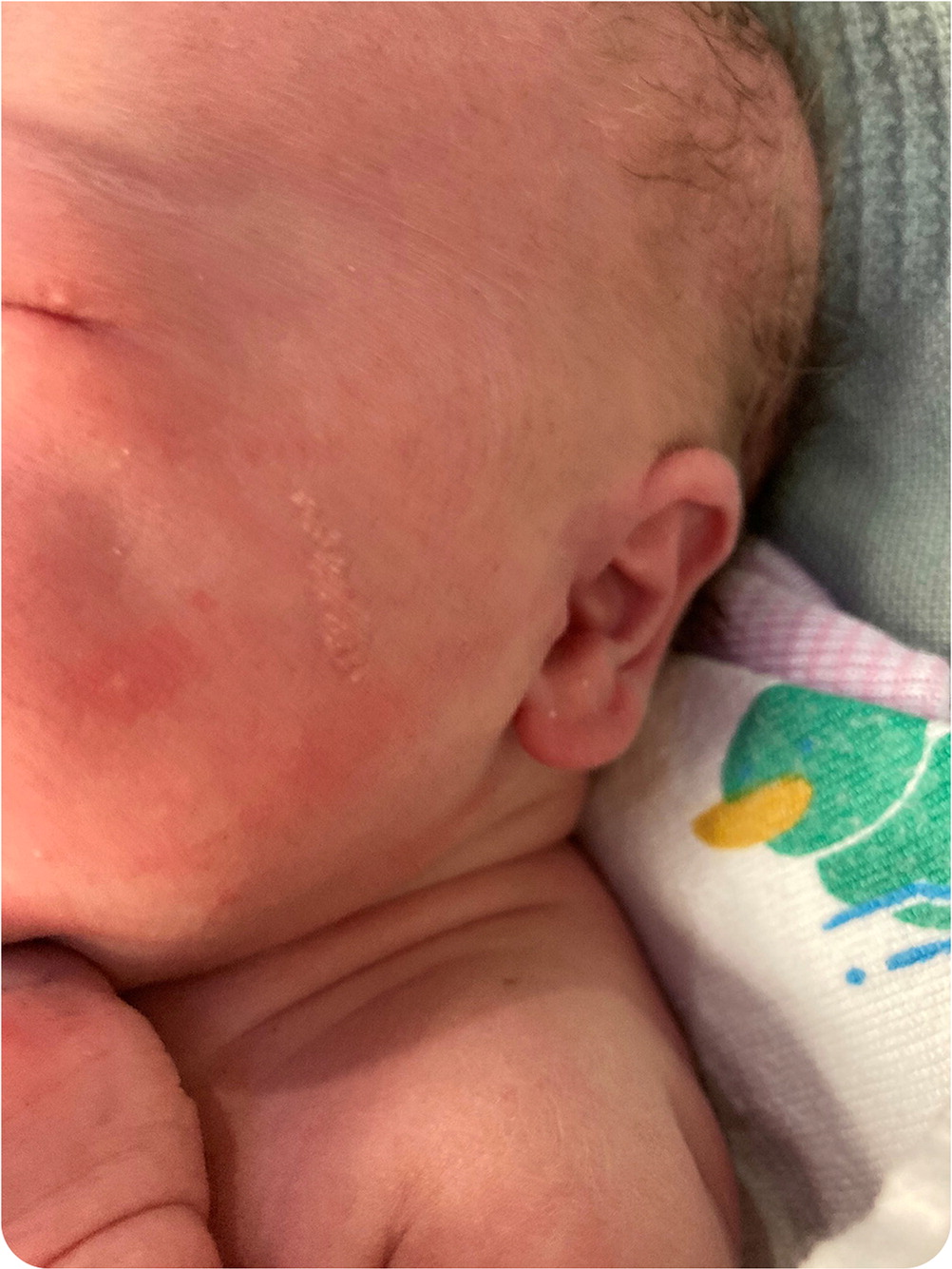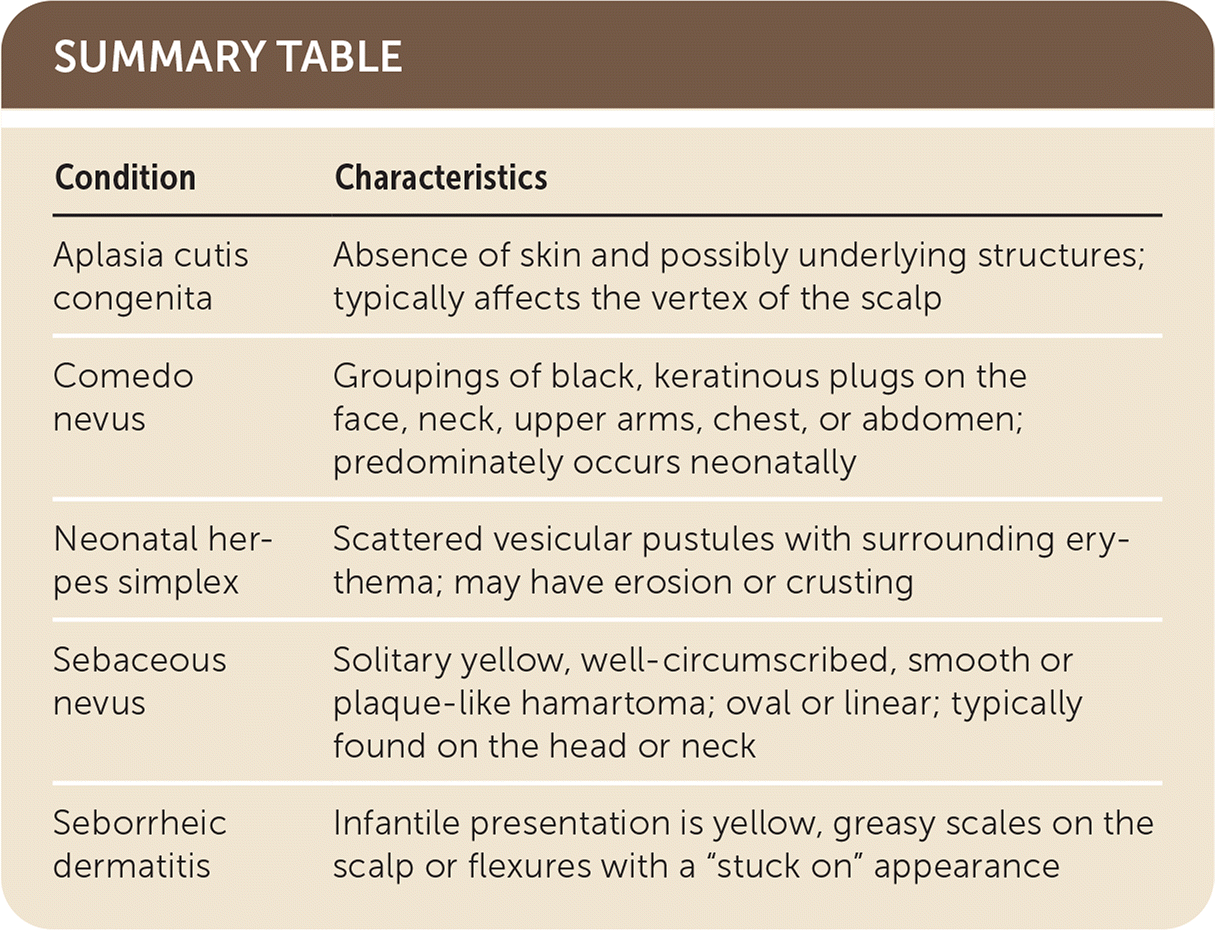
Am Fam Physician. 2021;104(5):523-524
Author disclosure: No relevant financial affiliations.
Following an uncomplicated pregnancy and full-term, spontaneous vaginal delivery, a yellowish linear plaque was noted on the cheek of the newborn (Figure 1). Laboratory test results were normal, and there was no family history of congenital skin conditions.

Question
Based on the patient's history and physical examination findings, which one of the following is the most likely diagnosis?
A. Aplasia cutis congenita.
B. Comedo nevus.
C. Neonatal herpes simplex.
D. Sebaceous nevus.
E. Seborrheic dermatitis.
Discussion
The answer is D: sebaceous nevus. Also referred to as an organoid nevus, this congenital malformation is most commonly found on the scalp and face but may also occur on the forehead and neck. It typically presents as a solitary asymptomatic, yellow, well-circumscribed, smooth or plaque-like hamartoma. It is typically oval or in a linear pattern. When located on the scalp, it may cause localized alopecia. Because of maternal hormones, a sebaceous nevus appears more prominent immediately after birth. As the child ages, the lesion thickens and may appear verrucous. Hormonal changes at puberty also make the lesion appear more prominent.1,2
If the diagnosis of sebaceous nevus is unclear, a biopsy may be performed. After puberty, there is a risk of progression to basal cell carcinoma, apocrine carcinoma, or squamous cell carcinoma. Prophylactic excision is usually recommended in late childhood. Patients may have sebaceous nevus syndrome, characterized by a primary lesion and associated cerebral, skeletal, and ocular defects.1,2
Aplasia cutis congenita is a rare congenital disorder that typically affects the vertex of the scalp. It presents as a full absence of skin and possibly underlying structures, such as bone and dura mater.3
A comedo nevus presents as groupings of black, keratinous plugs on the face, neck, upper arms, chest, or abdomen. The lesions predominately occur neonatally but can develop in childhood.4
Neonatal herpes simplex appears as vesicular pustules with surrounding erythema. The vesicles can be found anywhere on the body, most commonly the face, eyes, and mouth. They are usually scattered and may have erosion or crusting.5
In newborns, seborrheic dermatitis (cradle cap) typically presents as yellow, greasy scales on the scalp (cradle cap) or flexures with a “stuck on” appearance.6

| Condition | Characteristics |
|---|---|
| Aplasia cutis congenita | Absence of skin and possibly underlying structures; typically affects the vertex of the scalp |
| Comedo nevus | Groupings of black, keratinous plugs on the face, neck, upper arms, chest, or abdomen; predominately occurs neonatally |
| Neonatal herpes simplex | Scattered vesicular pustules with surrounding erythema; may have erosion or crusting |
| Sebaceous nevus | Solitary yellow, well-circumscribed, smooth or plaque-like hamartoma; oval or linear; typically found on the head or neck |
| Seborrheic dermatitis | Infantile presentation is yellow, greasy scales on the scalp or flexures with a “stuck on” appearance |
